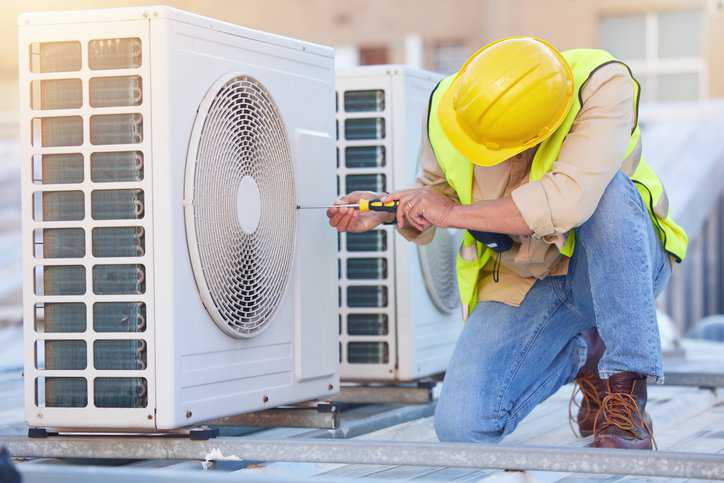ANSI/ASHRAE 193-2010 (R2024): HVAC Equipment Airtightness

An airtight building envelope and HVAC ducts result in a more precise ventilation system that can provide the correct amount of fresh air. When there are no losses of ventilation air during the ventilation air exchange (the circulation of stale indoor air out of the building and fresh air from outside), the unit can run at a lower speed. This makes the HVAC installation more energy efficient and quiet. ANSI/ASHRAE 193-2010 (R2024): Method Of Test For Determining The Airtightness Of HVAC Equipment covers the airtightness of forced-air HVAC equipment prior to field installation.
Airtightness of HVAC Equipment
One of the most important predictors of a building’s energy efficiency is its HVAC system. There are a number of ways to measure the performance of HVAC systems—energy efficiency ratings being one of the most common, but the airtightness of the equipment is an important factor as well. A maximum airtight duct is particular important for HVAC systems because heat or cold affects the heating and cooling of the building. Air that is not delivered to areas as specified in the building design is air that is not being used efficiently. With this in mind, ANSI/ASHRAE 193-2010 (R2024) was created to test the airtightness of HVAC equipment.
What Is ANSI/ASHRAE 193?
ANSI/ASHRAE 193-2010 (R2024) prescribes a method of test to determine the airtightness of forced-air HVAC equipment prior to field installation. This American National Standard applies to equipment intended for installation in ducted systems, including furnaces, heat pumps, air conditioners, coil boxes, filter boxes, and associated components. ANSI/ASHRAE 193-2010 (R2024) covers equipment that moves less than 3000 cfm (1400 L/s) of air.
This standard does not apply to ducts, plenums, or other field-constructed components.
Benefits of Superior Airtightness
Here are the advantages to an airtight HVAC system:
- Greatly reduced small-particle infiltration compared to conventional buildings.
- Ventilation works more effectively in airtight buildings than in leaky buildings.
- Airtight buildings save energy compared to conventional buildings because controlled ventilation exchanges less air with the outdoors than uncontrolled air leakage. In other words, reducing the amount of air that leaks in and out of a building is a cost-effective way to cut heating and cooling costs, improve durability, increase comfort, and create a healthier indoor environment.
- Airtight buildings are much more comfortable than conventional buildings.
- With a balanced ventilator, ventilation air comes from a filtered and clean source of outdoor air
Air Leakage vs Ventilation vs Airtightness
Air leakage, ventilation, and airtightness in a building are all not the same. Air leakage is the result of building imperfections or gaps in the building’s envelopes due to poor design or maintenance. It occurs when outside air enters and conditioned air leaves a building uncontrollably through cracks and openings, compromising the energy efficiency. Alternatively, ventilation is a controlled system by a user for removing and replacing air. Ventilation systems deliberately remove heat, smells, dust, and other contaminants by either natural (e.g., windows and doors) or mechanical (e.g., fans) methods.
Relying on air leakage for natural ventilation is not recommended. During cold or windy weather, too much air may enter the house. When it is warmer and less windy, not enough air may enter, which can result in poor indoor air quality. Air leakage also can contribute to moisture problems that affect occupants’ health and the structure’s durability. Sealing cracks and openings reduces drafts and cold spots, improving comfort. Moreover, airtightness is a solution for a good ventilation system as it affects infiltration and exfiltration.
Airtightness is avoiding the unintended introduction of outdoor air into a building or the loss of air to the outside (e.g., through poorly sealed glazing or building envelope). Improving airtightness can improve the thermal performance of a building by reducing the influx of cold air in winter and hot air in summer. Airtightness is one of the most cost-effective and easiest ways to improve your thermal comfort and reduce energy costs. Careful design of airtight HVAC equipment like that stated in ANSI/ASHRAE 193-2010 (R2024) is needed to assure that the risk of condensation does not increase when improving airtightness.
ANSI/ASHRAE 193-2010 (R2024): Method Of Test For Determining The Airtightness Of HVAC Equipment is available on the ANSI Webstore.






